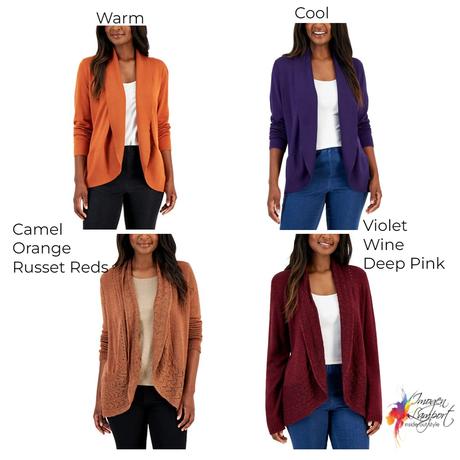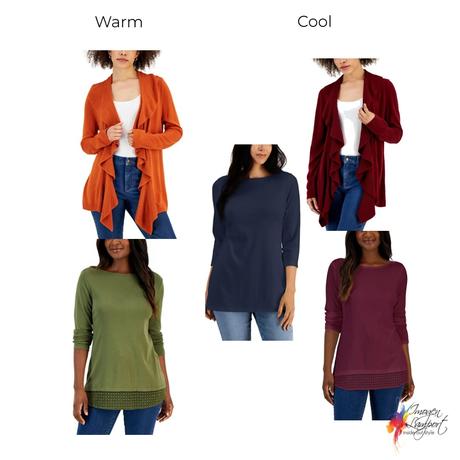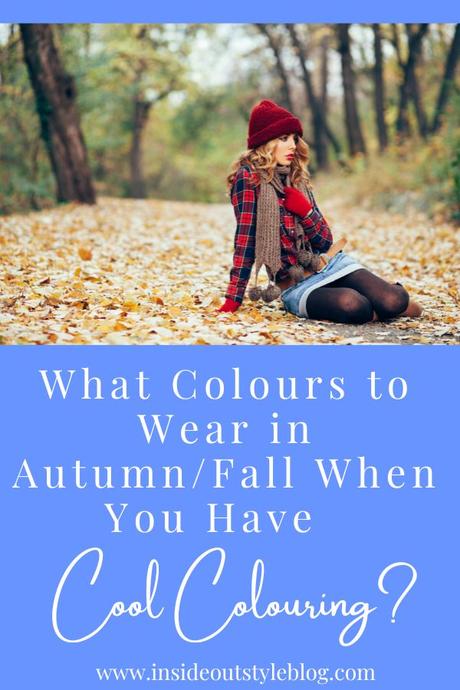



Traditionally, the “Autumn” seasonal colours are warm – both in the seasonal colour system, and often what is presented during this season each year by clothing retailers.
If you feel that wearing colours that really relate to the season is important to you, here are some tips on feeling seasonally appropriate whilst still working with your colour palette.
&iv;&modestbranding;&rel;&autohide;&playsinline;&autoplay;
Traditional autumn colours (and they relate to the seasonal “Autumn” palette – or in my system “Exotic” palette) are those colours we commonly see in decidious trees as their leaves turn and fall – russet, orange, yellows and the like. Yet these colours don’t suit anyone with cool colouring so how do you choose colours that work with the season as the days get shorter, darker and colder and those brighter, lighter colours don’t seem to suit the season as well?
Look to Nature and See the Variety of Colours
Look beyond deciduous trees for inspiration, consider the colours of sunsets, which has a range of both warm and cool colours – such as the pinks and purples you see in the sky at sunset, you’ll have versions of these in your cool colour palette.

Shop this board
Also think of cool weather experiences such as mulled red wine and cosy open fires and get inspired by those colours.

Click to shop
Patterns of Autumn
If you want to get inspired by autumn, think about the patterns that relate, falling leaves, harvest-inspired and nature-based.

Shop these styles

Click to shop
What’s in Your Palette?
Go with the colours that flatter you – your palette and your signature colours within that are always going to be your very best colours. You’ll just be wearing them in layers or heavier-weight clothing than you’ve been wearing in summer.
There is always a wide range of colours available in store no matter what the season, and there will be colour trends (Pantone put out colour trend forecasts) which means you’ll see more of some colours than others, but I’ve always found that there is a range of warm and cool colours, and light and darker colours available at any one time, in every season.
If you can’t find what you’re after, consider dying clothes to colours that flatter you and that you want to wear. Or making clothes in colours and patterns that work for you, if you have the skills, this seriously gives you so much more control over what you can have in your wardrobe!
If you get fixated that you are not seeing any of your colours, you probably won’t, your reticular activating system (RAS in your brain) is fixed on particular colours and is actually stopping you from seeing the full variety that actually exists. Because there are billions of bits of information that are coming to you at any one time, our brains can’t deal with that level of information all the time (overloaded and overwhelmed), so we cut out the majority of information and see a very small amount of what is actually available.
Rather than fixating on buying a particular colour from your palette, instead, see what is available and then choose the best for you from that rather than looking for a particular colour, which may not currently be on trend and available easily.
You are always better to wear colours in your ideal value and in your colours, rather than worrying about matching the specific colours that are currently appearing in the trees!
Discover Your Ideal Colours
Want to discover your best colours and signature colours? Then a colour analysis is a great place to start – you can get one online here or as part of 7 Steps to Style (which also includes body shape, personality, wardrobe and shopping) if you want the full image and style program.
9 Ways Knowing Your Best Colours Will Change Your Life as Well as Your Wardrobe
Understanding Colour Systems and Personal Colour Analysis






